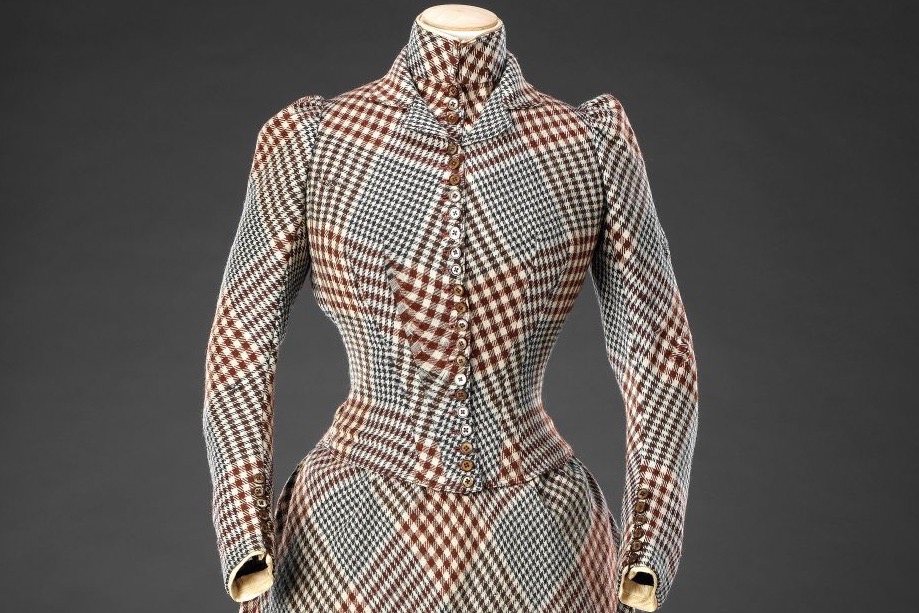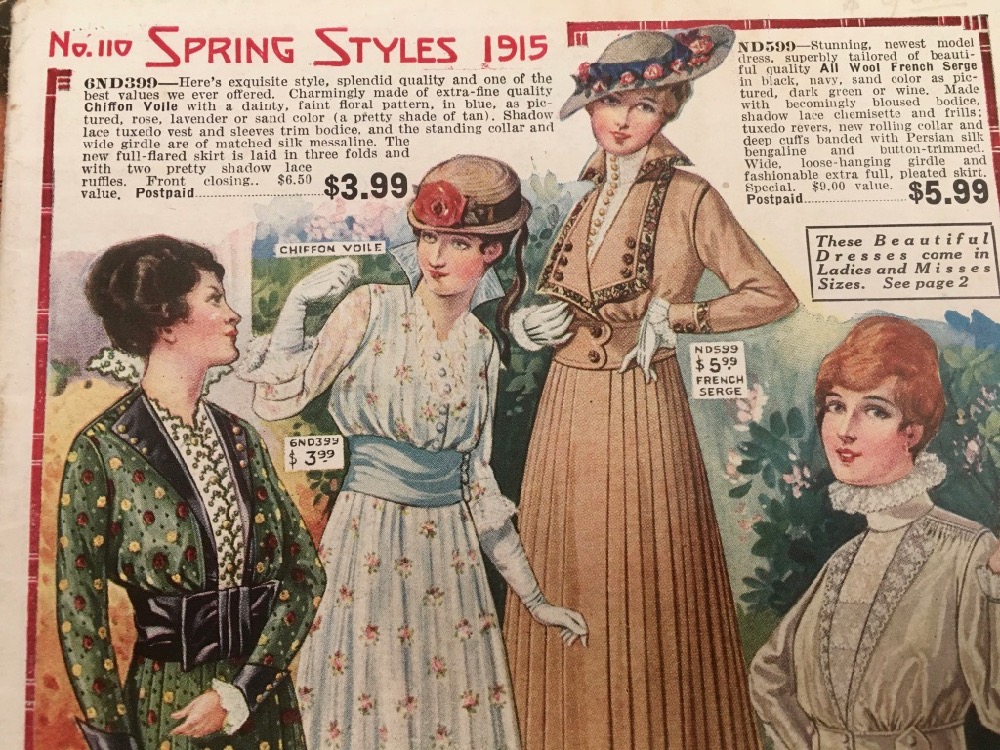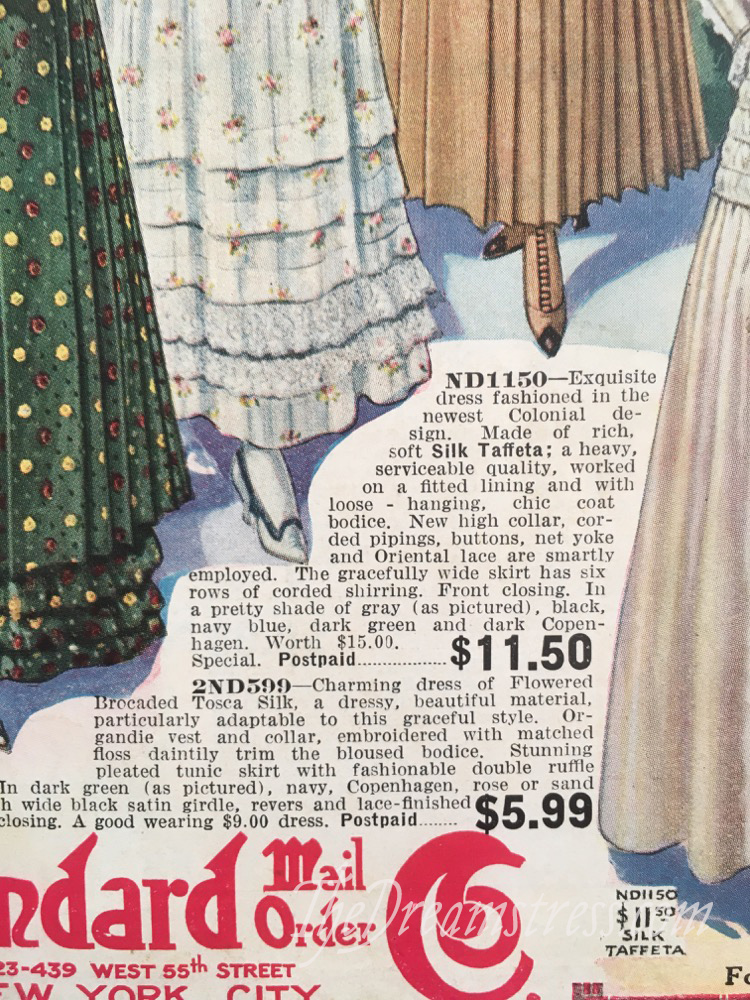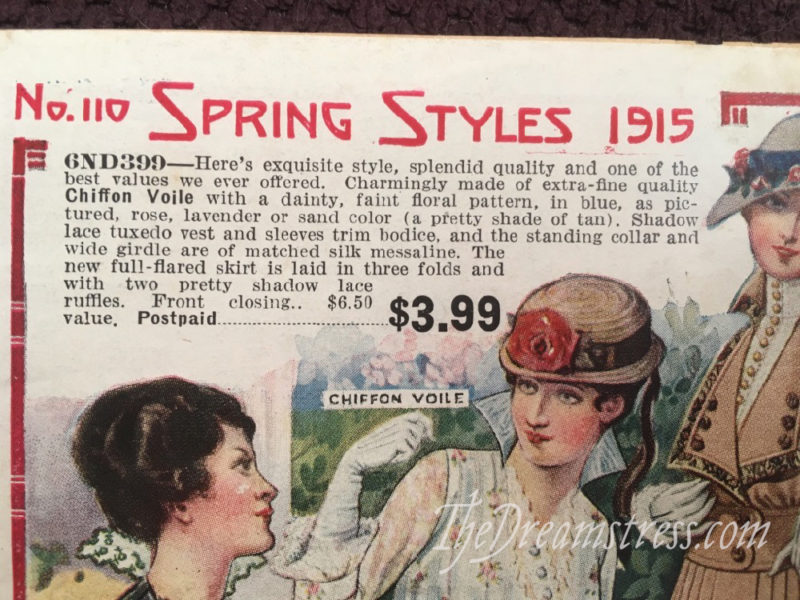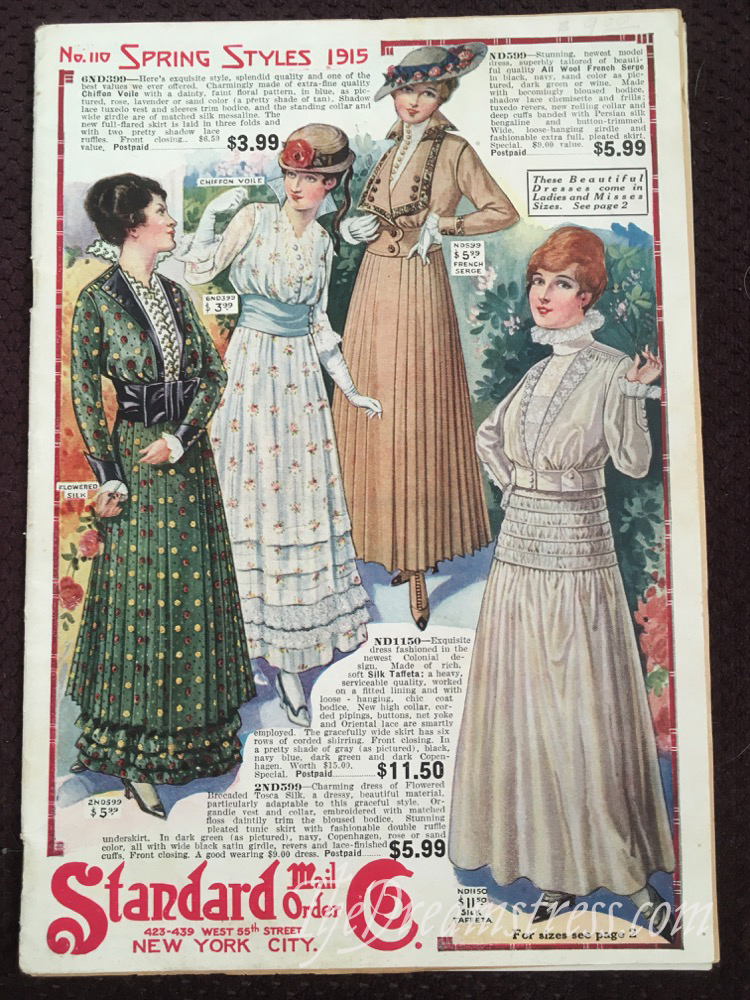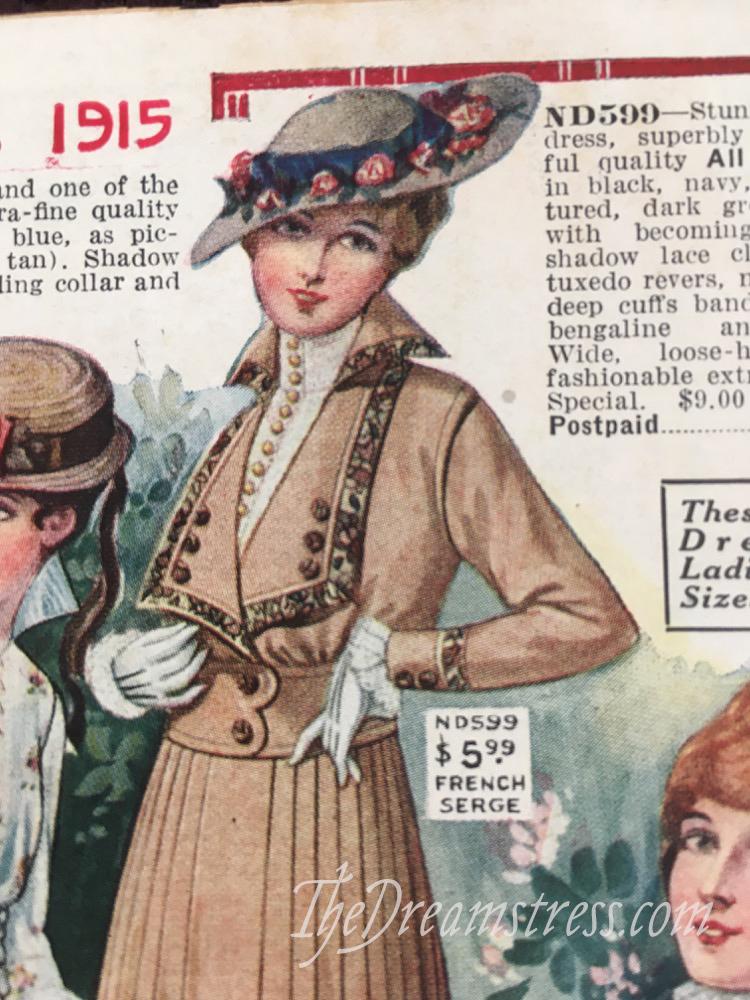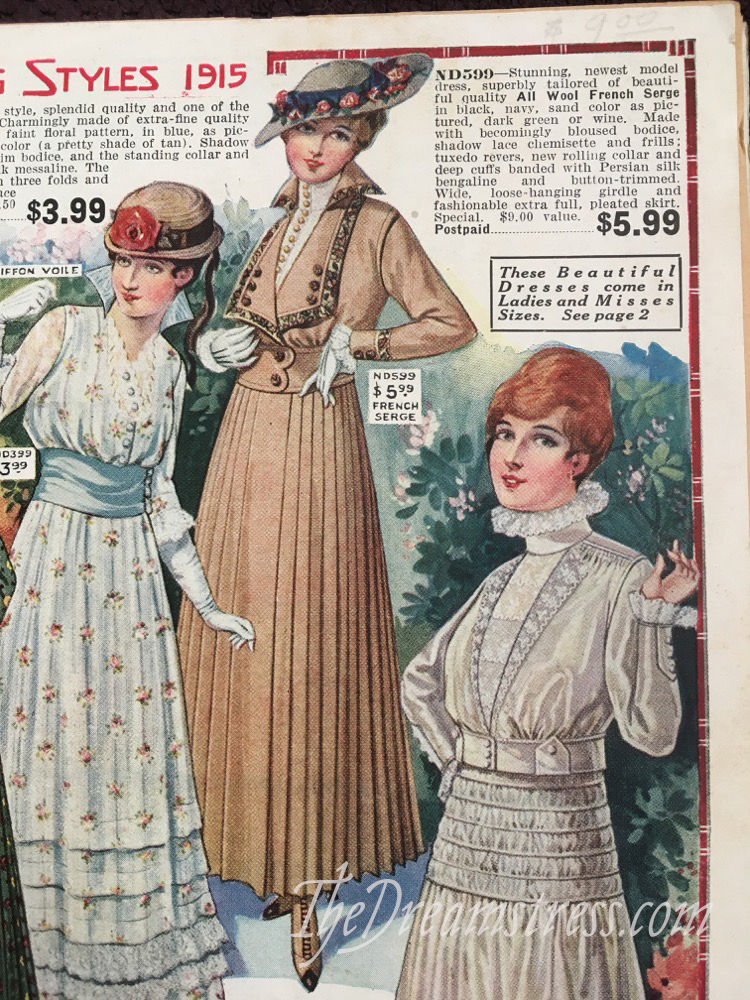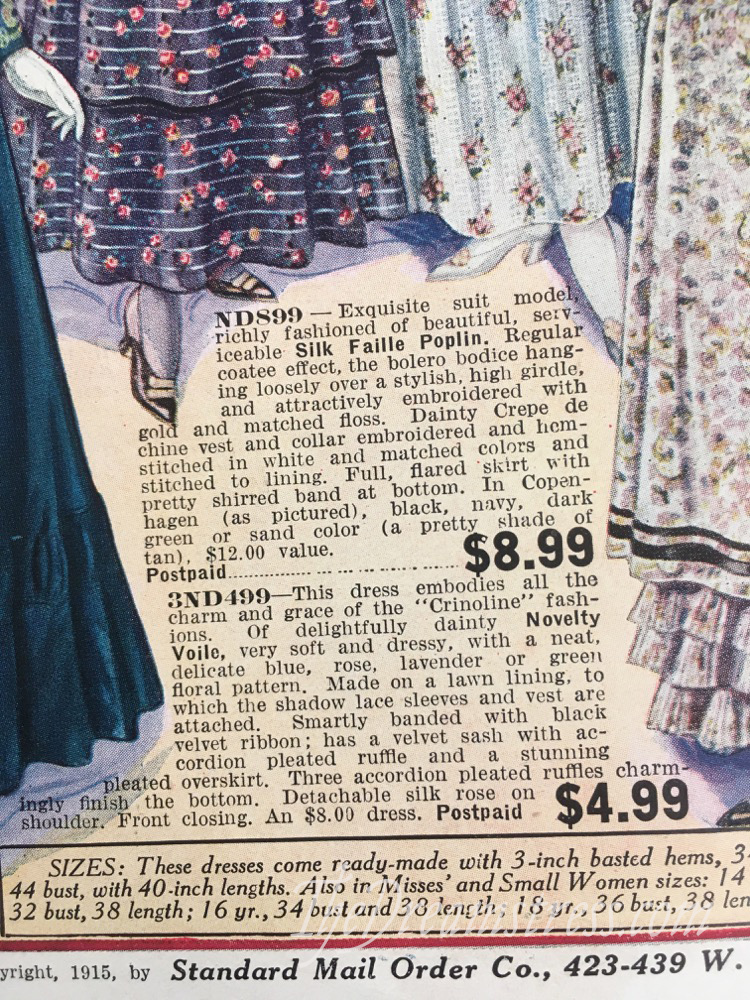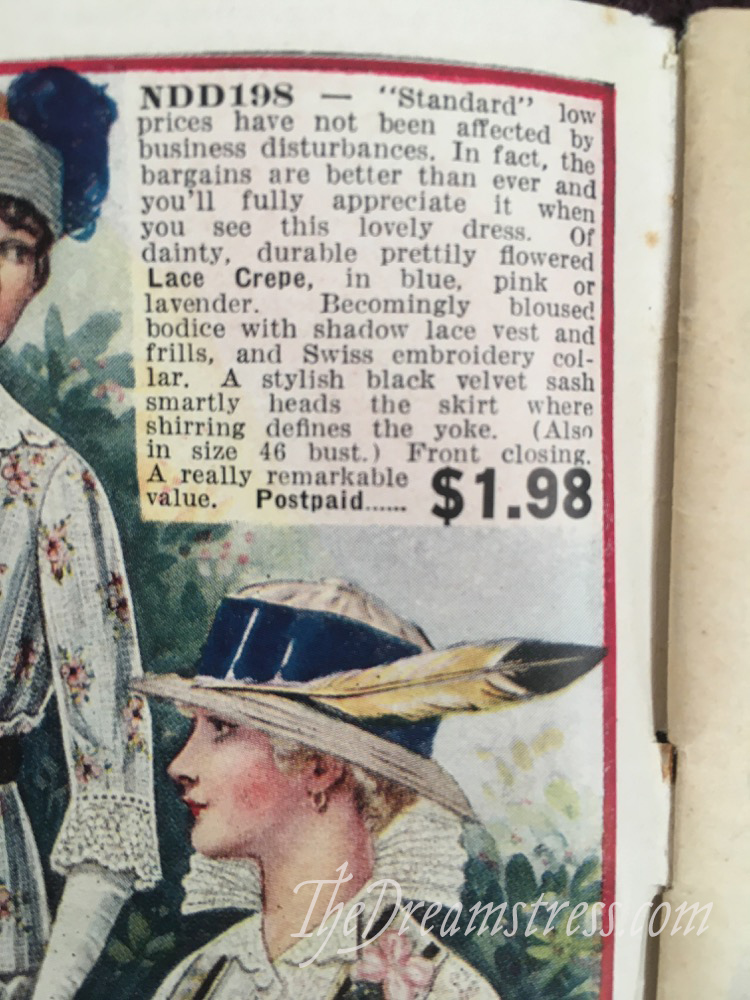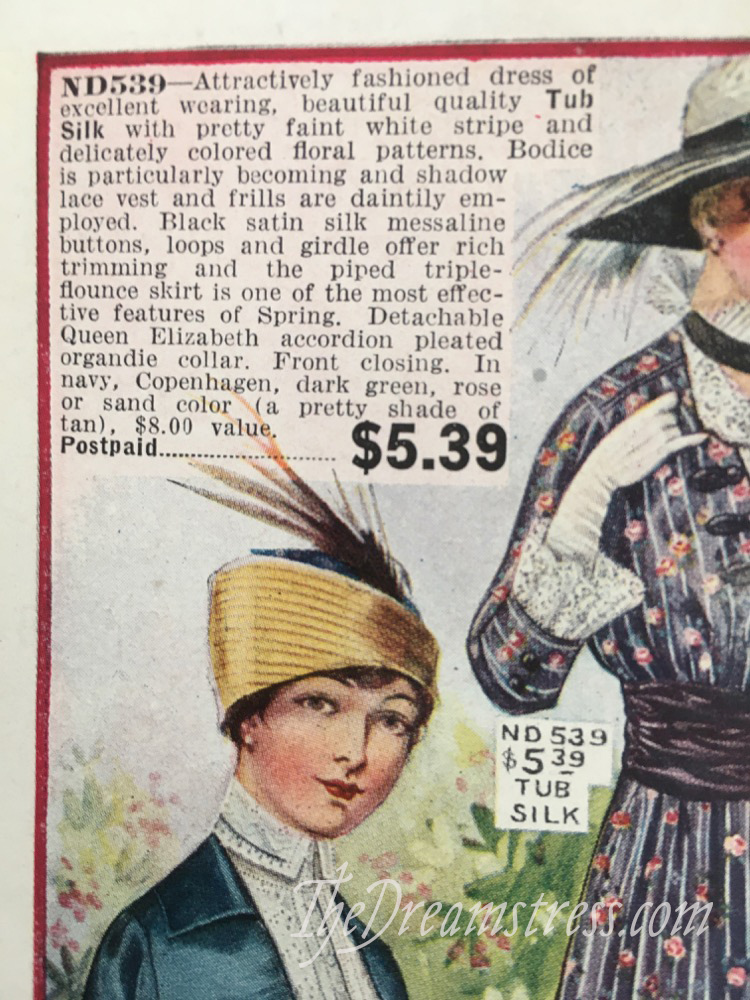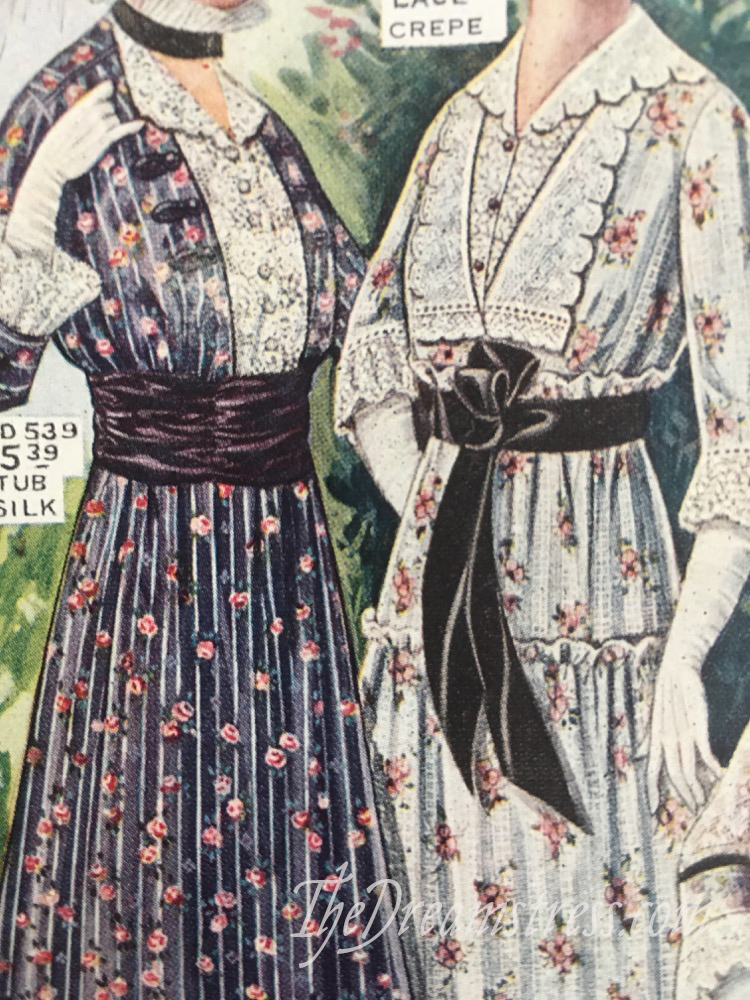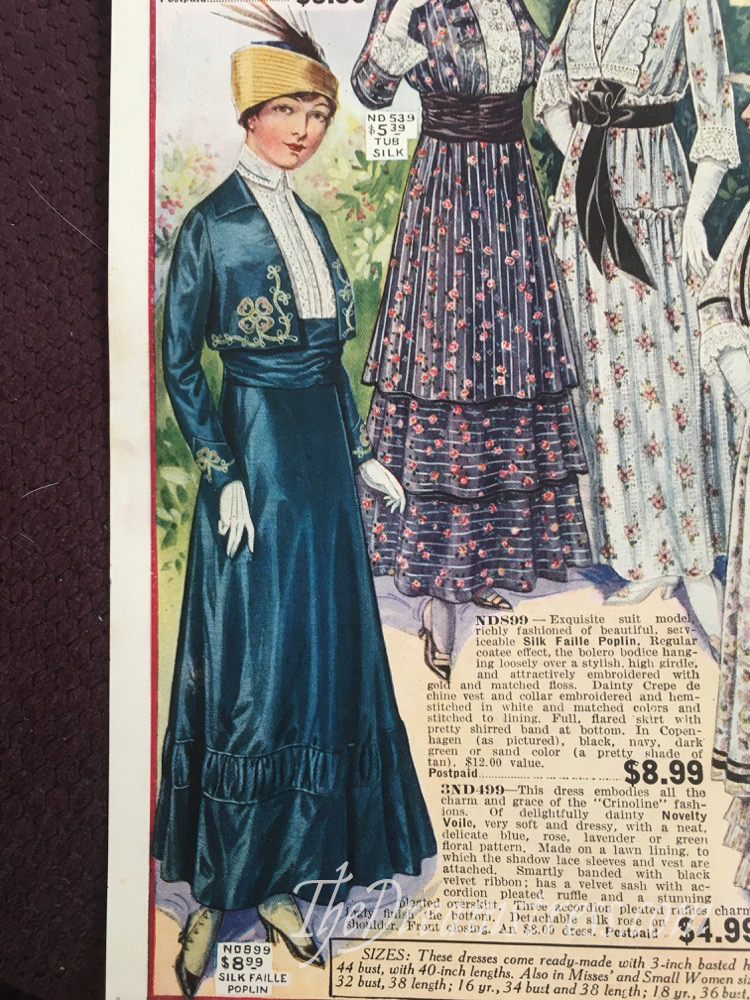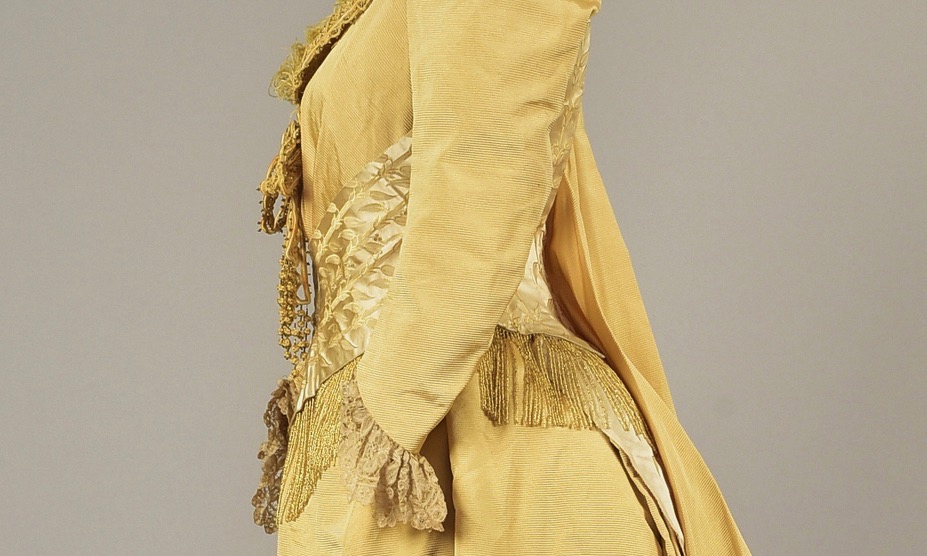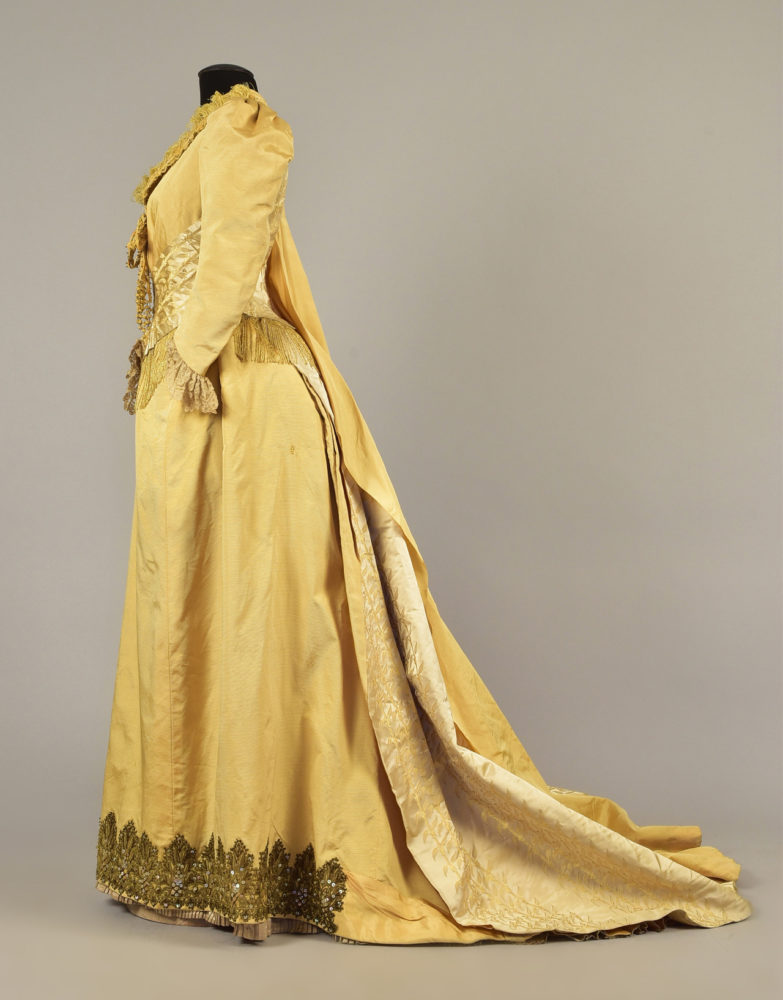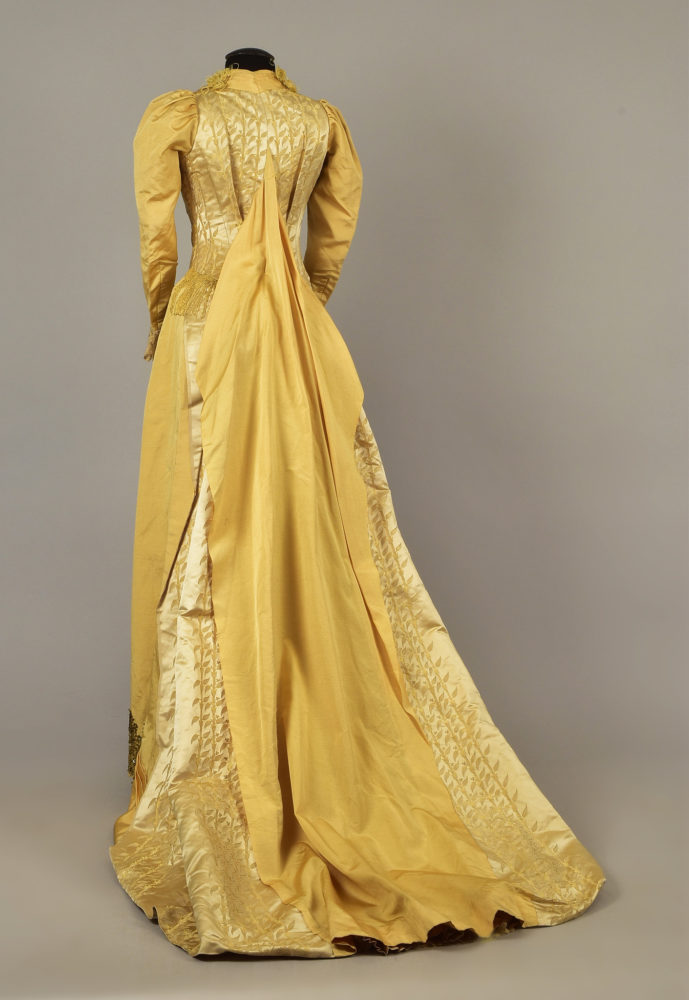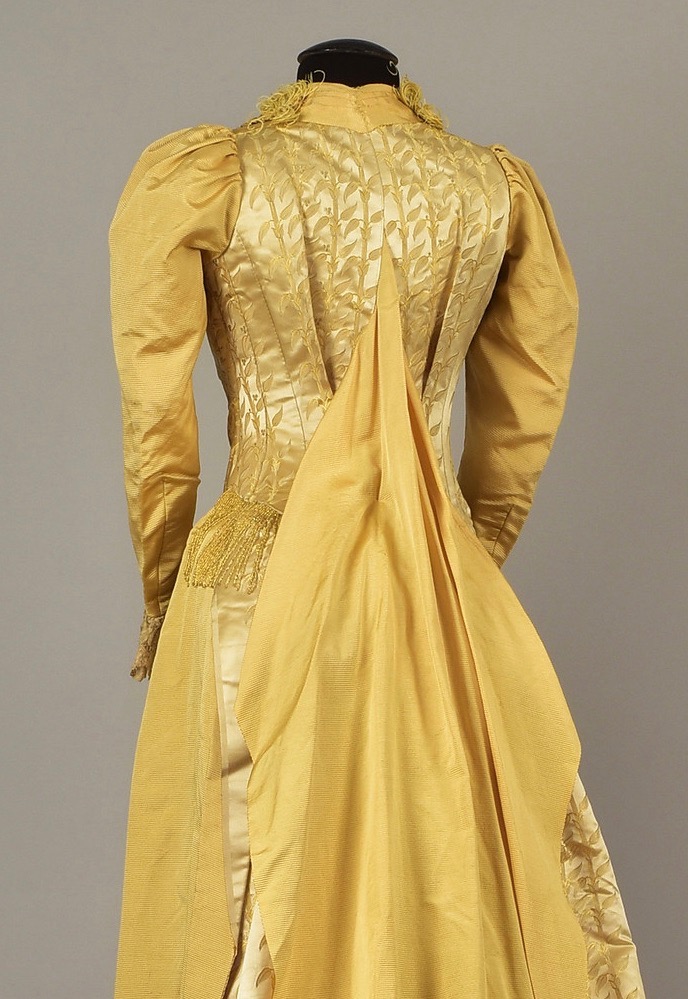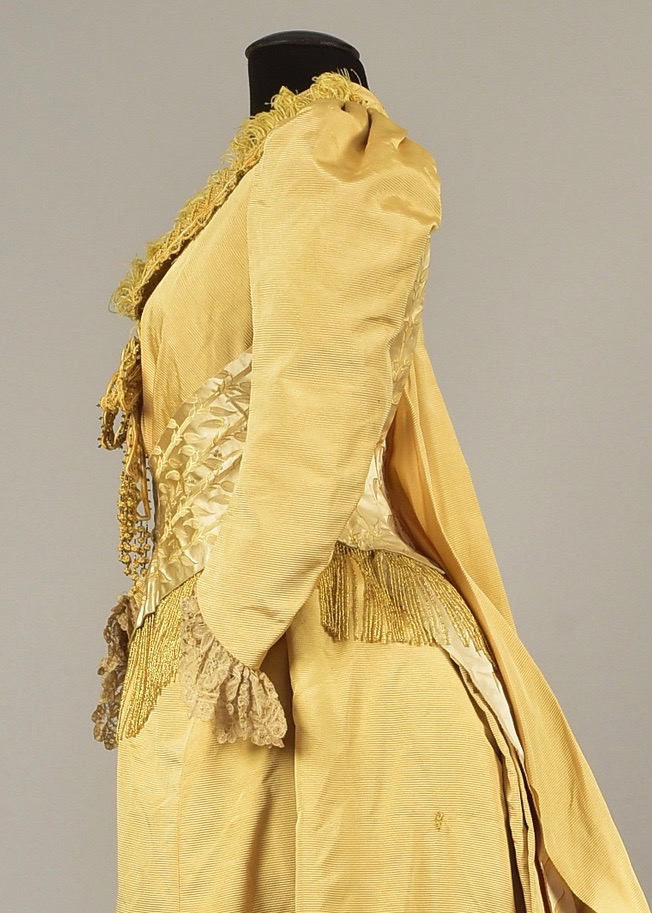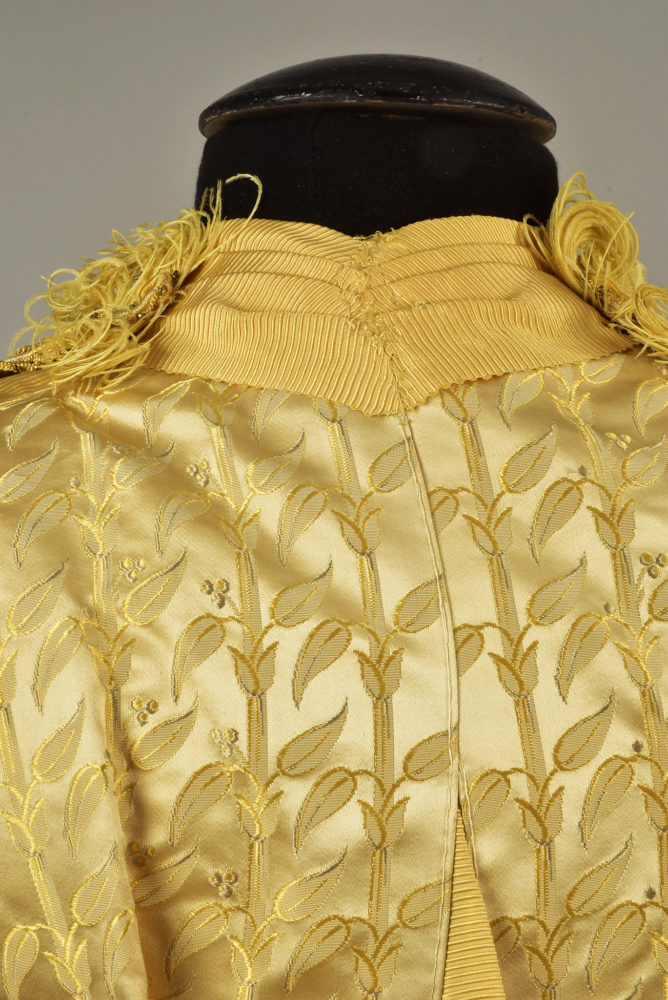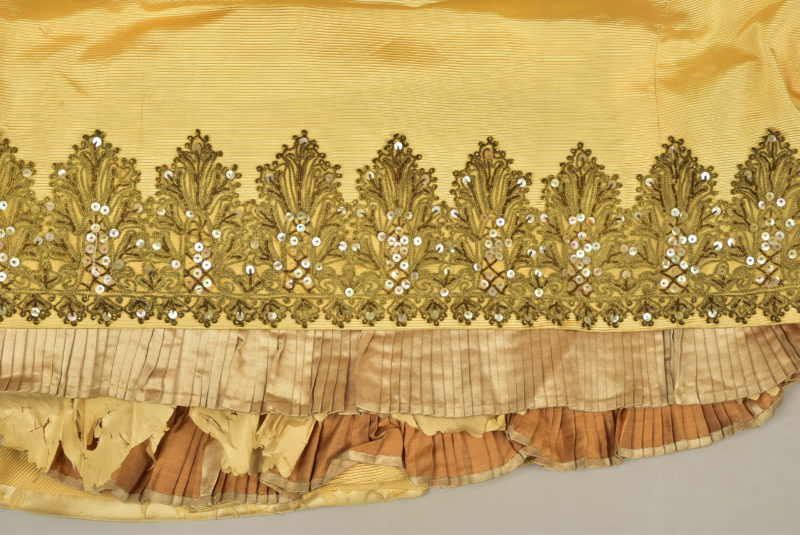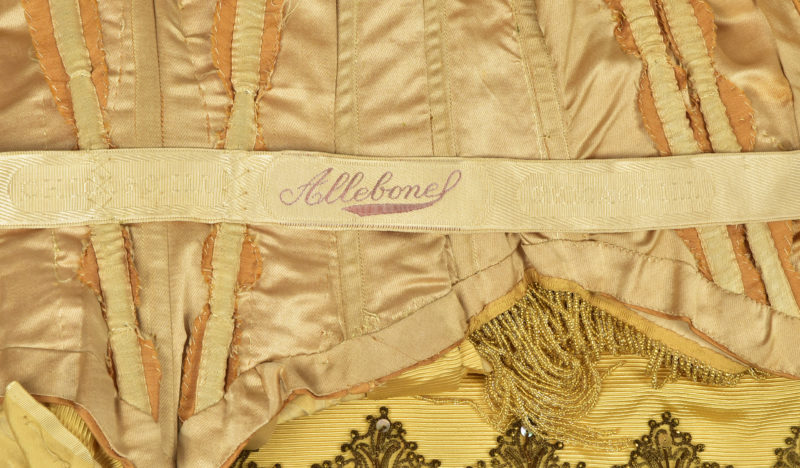This week’s Rate the Dress stays in the same general time-period as last week’s tea gown, but goes from silliness and swoosh to severity, straight lines and tailoring.
Last Week: an almost-certainly-a-tea-gown in warm yellow
Sometimes the ratings for a Rate the Dress are all over the place. Sometimes there are a few clear blocks of opinions and ratings. And every once in a while there is an almost unanimous agreement – or at least a substantially cohesive verdict. A few of you did really like last week’s dress. And an even smaller few (well, single, not even few) of you didn’t. But more than 2/3rds of you fell into the 6-7.5 range and thought that the dress just had too much trim, but not enough of it in some places, and would have looked much better shorn of its fringe and beading and lace.
The Total: 7 out of 10
The total for last week was so obvious I didn’t need a calculator!
This week: a tailored walking dress
This week’s Rate the Dress is a severely tailored walking dress in large scale check from the John Bright Collection.
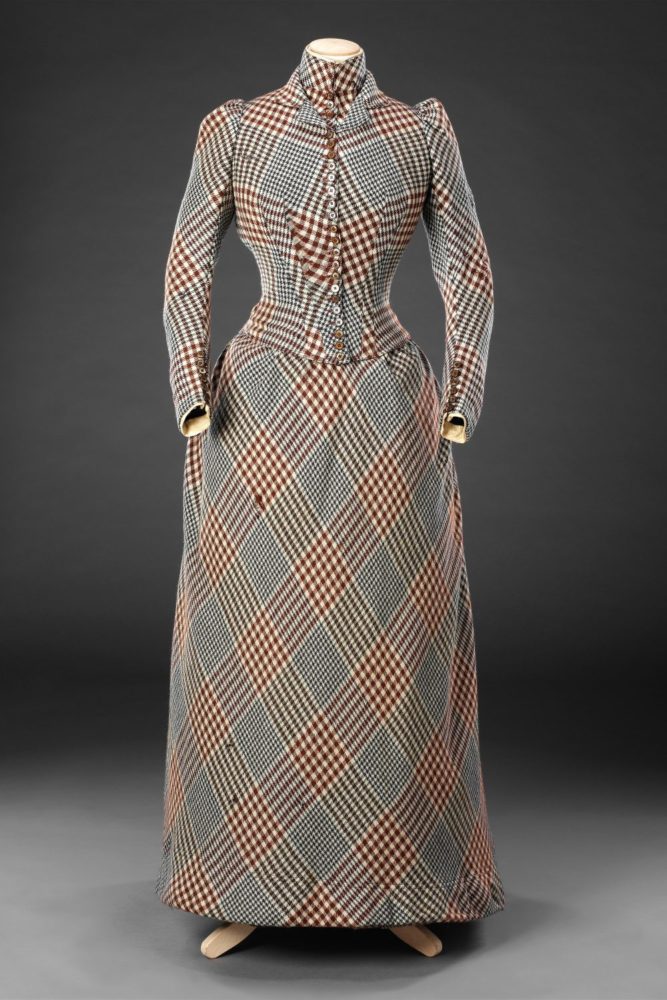
It features a streamlined bodice with many, many, many buttons on the overbodice, false underbodice with standing collar, and slim sleeves.

The skirt is un-ornamented except for the many gathers that add fullness in back, and were cut to fall over a small bustle.
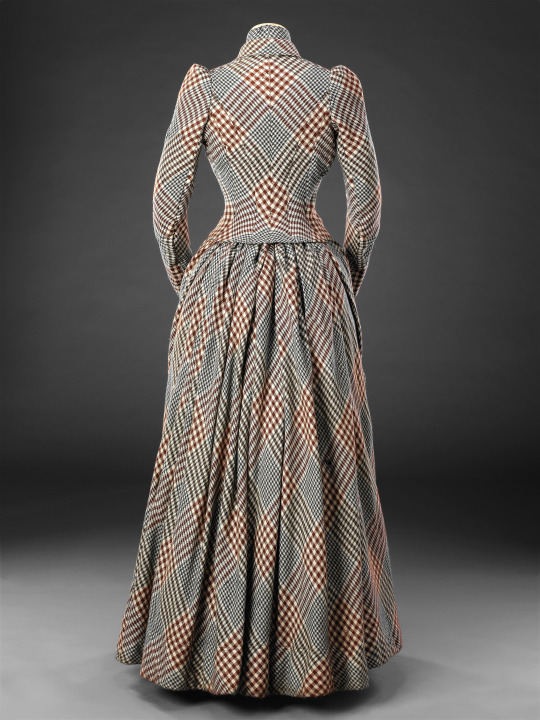
The skirt, sleeves, and bodice back are cut on the bias, creating the impression that the dress wraps around the wearer, enclosing her in a web of worsted wool.
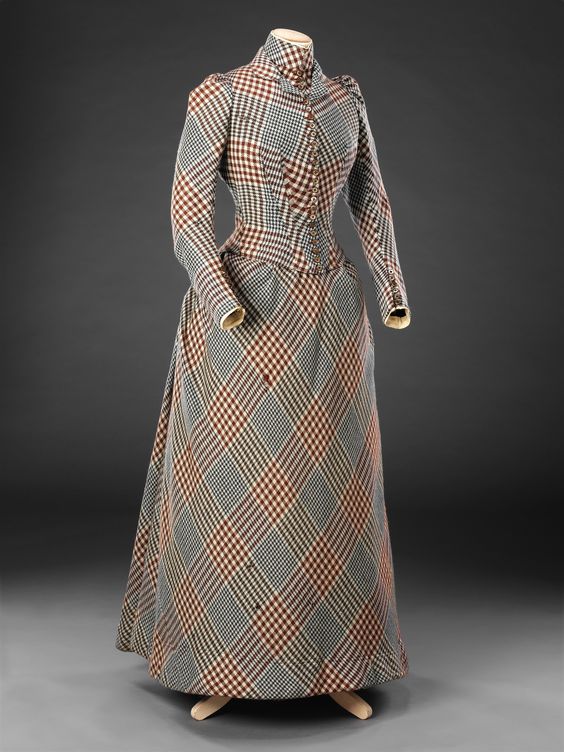
If it weren’t that this dress were later, you could poetically say that this dress is almost the chrysalis from which last week’s butterfly emerged. Is this a case of the cocoon being preferable to the hatchling?
What do you think?
Rate the Dress on a Scale of 1 to 10
A reminder about rating — feel free to be critical if you don’t like a thing, but make sure that your comments aren’t actually insulting to those who do like a garment. Phrase criticism as your opinion, rather than a flat fact. Our different tastes are what make Rate the Dress so interesting. It’s no fun when a comment implies that anyone who doesn’t agree with it, or who would wear a garment, is totally lacking in taste.
(as usual, nothing more complicated than a .5. I also hugely appreciate it if you only do one rating, and set it on a line at the very end of your comment

